The social media advertising market continues to explode each year.
However, one platform dominates the majority of that spending.
Facebook consumes 68% of the total spend. It has the biggest reach, the most options, and the most advanced advertising toolset.
They have a DIY ad platform that lets over 1 million small businesses sign up and get a new ad campaign going the same day.
On the one hand, that’s great! It puts this tremendous power in your hands so that you have all the tools you’d ever need to grow.
But on the other hand, it might be a little overwhelming.
Facebook’s advertising platform is powerful, but it’s also complex.
You could spend every waking moment on it, trying to figure out what’s working, what’s not, and what you should do next.
I have some good news for you.
What if I told you there was an option to set your ad campaigns on autopilot?
You could create profitable Facebook ad campaigns that basically run themselves.
The good news? This dreamlike scenario is possible.
But first, you have to learn how a few technical features work.
Let me first show you what Facebook’s Ad Rules are before running down a list of tactics to set your campaigns on autopilot.
How Facebook’s Ad Rules work
Firing up a single Facebook Ad isn’t that challenging. It might only take you a few minutes to figure out if it’s your first time.
There’s only one problem with that.
The best way to improve your Facebook sales funnel is to have multiple campaigns running at the same time, all working together to create customers out of strangers.
That can make your life really stressful, to be honest.
You constantly have to check in on each campaign. You also need to make sure that things are heading in the right direction and that you’re not blowing your budget with a few simple mistakes.
That’s where Facebook’s Ad Rules come into play.
You can create “rules” that effectively say:
- If this ‘trigger’ is met
- Perform this action as a response
Let me walk you through an example, so it makes a little more sense.
You can create a new rule and apply it to an ad set or campaign.
This rule can automatically perform actions on your behalf.
For example, you can set a list of restrictions based on any number of ad variables, including:
- Cost Per Click
- Cost Per Lead
- Cost Per Purchase
- Daily Spent
- Lifetime Spent
Then we can tell Facebook to make different decisions if those values are greater than, less than, or equal to another value.
The result should look like a conversation with Facebook that sounds like this:
- Neil: “Hi, Facebook.”
- Facebook: “Hi, Neil.”
- Neil: “Facebook, can you please stop running this ad if the same people start seeing it five times or more? I don’t want to annoy them.”
- Facebook: “Ok, no problem.”
- Neil: “Thanks, Facebook.”
- Facebook: “You’re welcome, Neil.”
Are you still with me?
I know it looks confusing at first. However, once you see a few more examples, it should start to click.
Let’s take a look at each setting on these Ad Rules, so you can see how they all come together.
How each setting on an Ad Rule works
Before we get into all of the tips and tricks, I want to break down exactly how these Ad Rules work.
Here’s a quick example of how it looks inside Facebook:
- Apply Rule To: First, you can select if you’d like this rule to apply to a single ad, a collection of ads in one set, or even entire ad campaigns.
- Action: Next, you specify the ultimate decision you want Facebook to make on your behalf.
- Condition: Then you can select the different variables to watch for that tell Facebook when to ‘trigger’ the action you just specified.
- Notification: Last, you can tell Facebook to give you (or your team members) a heads up when this rule has been put into action so you can stay on top of any and all ad changes made automatically.
Is that making a little more sense already? I hope so.
Let’s take a look at each one in-depth so it really hits home.
Ad campaigns can contain multiple ad sets, which then have their own set of ads underneath.
Here’s how that would look:
- Ad Campaign
- Ad Set
- Ad
- Ad Set
So you can apply these rules to each of those levels. If you applied it to the top level (Ad Campaign), it would control how all of the ads acted below.
If you just applied it to an individual ad, the other ad sets in your campaign could still run as normal.
Now let’s zoom in on the different actions you can ask Facebook to make for you.
The two primary actions Facebook can make include adjusting your budget or bids.
- Adjust Budget: You can tell Facebook to increase, decrease, or stop your daily and lifetime budgets.
- Adjust Manual Bid: You can tell Facebook that you’re OK spending more on a particular ad or when you’d like to start cutting back to save money.
There are different scenarios where you’d want to increase or decrease each of these. However, we’ll save those for the next section.
Next up are the conditions which dictate when those actions take place. Here’s how those look:
There are a lot of conditions you can select.
There are a few general ones that apply to most companies.
For example, you can select your Daily Spent, Lifetime Spent, or even Cost Per Click that probably wouldn’t change for most businesses.
However, there are also a few industry-specific features, like Cost Per Mobile App Install vs. Cost Per Website Conversion that are specialized for different businesses.
The last feature, notifications, is one of the most important.
Your Facebook Ads can get incredibly complex in a hurry if you start creating multiple Ad Rules to run on your different campaigns.
Think about it. Facebook is going to start making all kinds of changes for you on the fly, without you having any idea of what’s going on.
So the notifications are there to help save you the hassle of trying to keep up with what’s happening.
For example, you can start by having Facebook send you both an in-app notification and also a reminder email when your actions run. This helps you keep track of all the details.
You can customize how you receive those notifications. That way, you’re kept in the loop only when the ‘big’ changes take place.
For example, you can set a time range and customize settings, so you’re given a daily or weekly update of all changes (as opposed to every single time something runs).
Let’s say you set up a new campaign with a $500 total budget.
However, you don’t want Facebook just to stop your campaign when you hit that cap limit. You might want a notification when you hit that limit.
That way you can take a look at the results after spending enough to make the numbers more statistically significant, and then decide how you’d like to tweak the campaign.
Hopefully, these Ad Rules should start making a little more sense.
If so, let’s move into some of the tactics so you can see exactly how these Ad Rules start paying dividends immediately.
Tip #1. Control how much you spend each day
Facebook allows you to set daily spend caps so that you’ll never spend over a certain amount.
However, a ‘hard’ cap like that isn’t always ideal.
What if you can tell, way before hitting that number, if things are looking terrible?
You don’t want to needlessly waste money if your campaign numbers are already upside down.
Or, on the other hand, what if early results are looking promising? What if you want to increase the cap?
Let’s create a rule for all active ad sets in a campaign to control this issue.
For example, I want to decrease my daily budget by $25 if my Cost Per Lead becomes greater than $5.
(Being able to understand how much you can afford to spend on a Cost Per Lead is one of the best ways to avoid the common reasons why PPC campaigns fail.)
So here’s what your new Ad Rule should look like in this scenario:
- Apply this Rule to all active ad sets currently running in a single campaign.
- Decrease the daily ad budget by $25.
- If the Cost Per Lead starts to exceed $5 (and after at least 8,000 impressions to make sure that you’re reaching enough people so that these numbers are relevant).
- Send me a notification and email on a daily basis with an update of what’s happening.
See? It’s not that hard when you break it all down into each little step.
In this scenario, you might even want to create another rule that’s going to turn the ad set off completely if you start missing one of those key metrics you’ve already identified (like the Cost Per Result).
That way, this campaign will stop. You won’t have to blow through the entire budget when Facebook already knew your campaign numbers were going astray.
Tip #2. Increase costs when early results look good
In this example, you’re trying to get more mobile app installs.
The more app installs you can get, the more paying customers you can convert.
You’ve already done the math and determined that you can profitably buy new customers with Facebook advertising if the cost per mobile install is less than $5.
Think back to the last example for a second.
If the numbers aren’t looking good, you might want to decrease the daily budget.
In this scenario, if the numbers are looking good, maybe you want to increase them!
You want as many new app installs as you can afford. So if you’re adding them for a good price, the last thing you want is for the campaign to turn off because it hit some arbitrary daily spending limit.
So in this case, I’m going to say that the daily budget for your ad set should increase up to another $100 if the Cost Per Mobile Install is less than your target.
Facebook advertising is amazing because you can flip a switch and start getting new customers instantly.
When the times are good, and results are pouring in under budget, you can continue raising the spending limit to keep the awesome results coming in.
Tip #3. Control ‘ad fatigue’ to avoid running your ads into the ground
The last thing you want to do with your ads is run them into the ground and make your customers more banner blind than they already are.
Banner blindness refers to how people completely ignore anything that looks like an ad when it lacks any relevance to what they’re interested in at the moment.
Display ads like Facebook’s can often decrease in value over time if they start veering off track or become too disruptive.
One of two things will commonly happen:
- People will start turning a blind eye to your ads that they keep seeing repeatedly.
- Or worse, they’ll start looking into ad blocking technology so that they never see your ads again.
One study highlighted that people would actively block online ads when they start becoming annoying or repetitive.
Good ads are usually welcome. They give something interesting to a potential customer that they may have been already considering.
For example, you look at new Nike running shoes on their website but hold back before pulling the trigger. However, a few days later, you see an ad on Facebook with the same exact model at a 20% discount.
Score! Who says procrastination doesn’t pay?
But if you keep hitting people over the head with the same ad, they’ll start to develop “ad fatigue.”
The same ads that were killing it a few weeks ago can start to become stale over time.
In fact, it might only start taking a few days before your ad performance starts to decline.
You’ll see results start dropping off a cliff because you’ve beaten your audience over the head with all of them.
The way you control this inside Facebook’s advertising platform is by adjusting the ‘frequency’ number.
There are two major advertising metrics that have been around for decades:
- Reach: The number of unique people who see your ad.
- Frequency: The number of times each person sees your ad.
If people see your ad too many times (or the frequency is too high), you’ll want to back it off or even shut it off completely to avoid making your audience upset.
You don’t want them ignoring or blocking your ads in the future.
Thankfully, a simple Ad Rule can monitor this for you and automatically react when you start reaching the danger zone.
So create a new Rule, select “Turn off ad set” as the action so that your campaign will instantly start shutting down once the frequency starts going over five.
Phew! Crisis averted.
Of course, you can’t just have all of your campaigns go down at the same time. Where will all of your new leads and customers come from then?
So you can combine this last rule with a notification that will immediately send you (or your Facebook ad manager) an update.
The update can remind you to go in and either start changing ads up or creating a new campaign so that you can get it back online ASAP (and avoid costly downtime).
Conclusion
Facebook’s Ad Rules can seem confusing at first. They’re slightly technical, and they use a bunch of complex terminology that makes it hard to understand how they work.
The good news is that they’re pretty easy to use once you get the hang of them.
And they can also be a huge time saver when you have multiple ad campaigns running at the same time.
Facebook ad campaigns work best when they work together.
That means you might have some campaigns generating new attention or visits back to your site, while other ones are more focused on converting those visitors later.
But that can also mean there’s a lot of balls in the air that you’re forced to juggle.
Thankfully, Facebook Ad Rules can drastically simplify your life. They give you autopilot-like rules that allow you to set and forget each campaign.
Best of all, you don’t need extra Facebook advertising tools.
Facebook will automatically make each action on your behalf and then send you a friendly update when each action has been performed.
It’s like your own Facebook advertising personal assistant, except at a fraction of the cost (free).
What’s the most time-consuming aspect of managing Facebook campaigns?
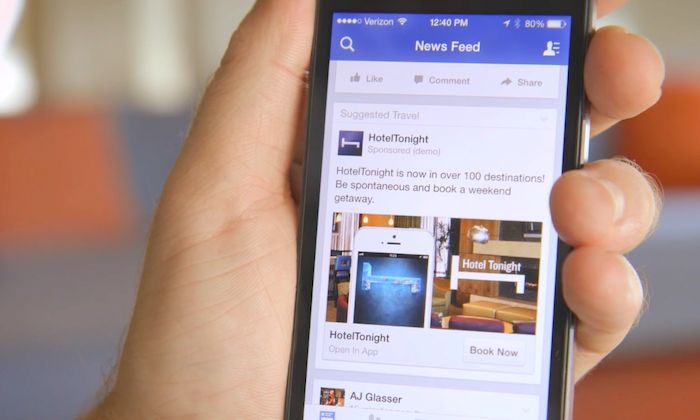
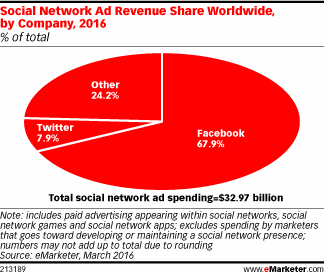

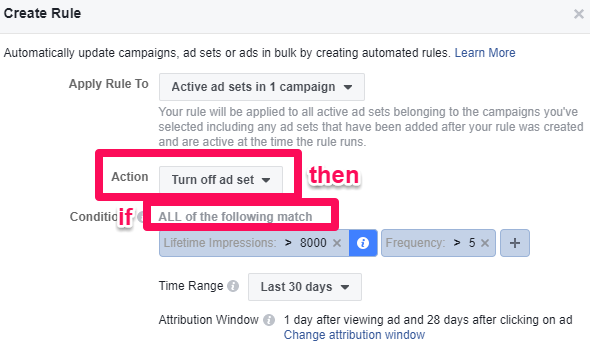
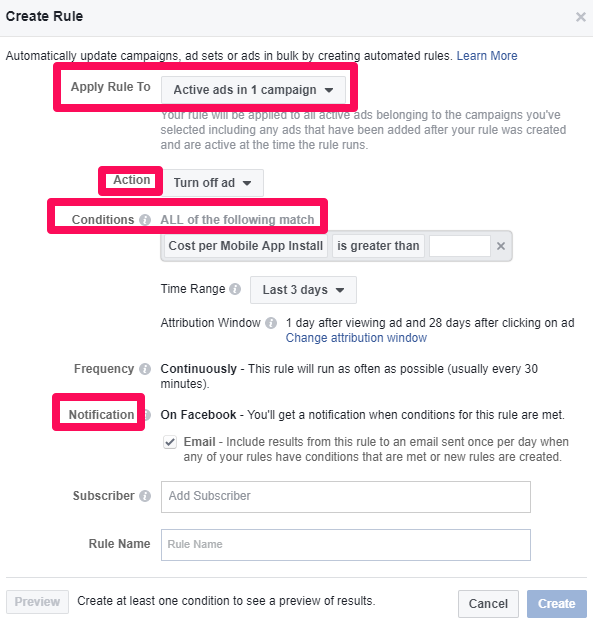
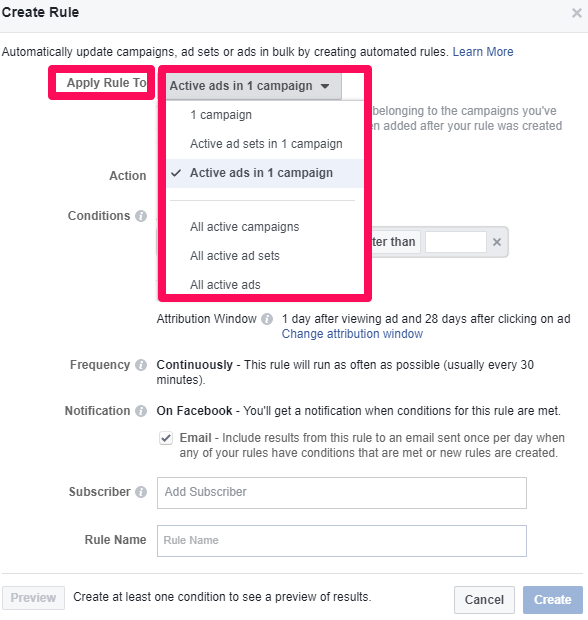
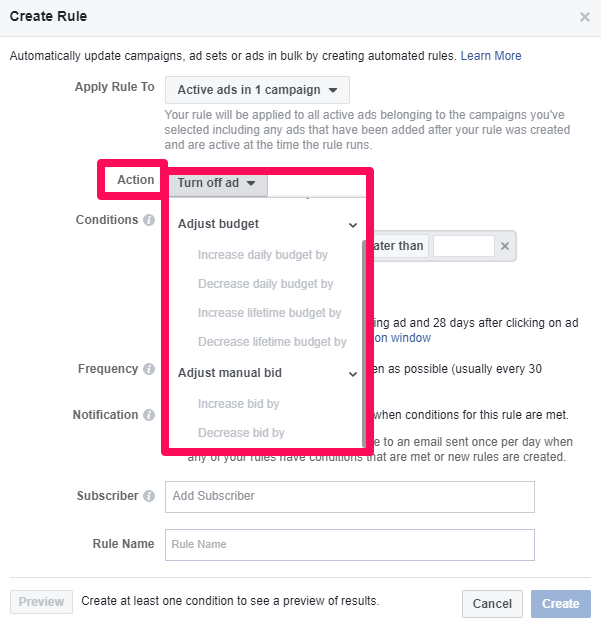
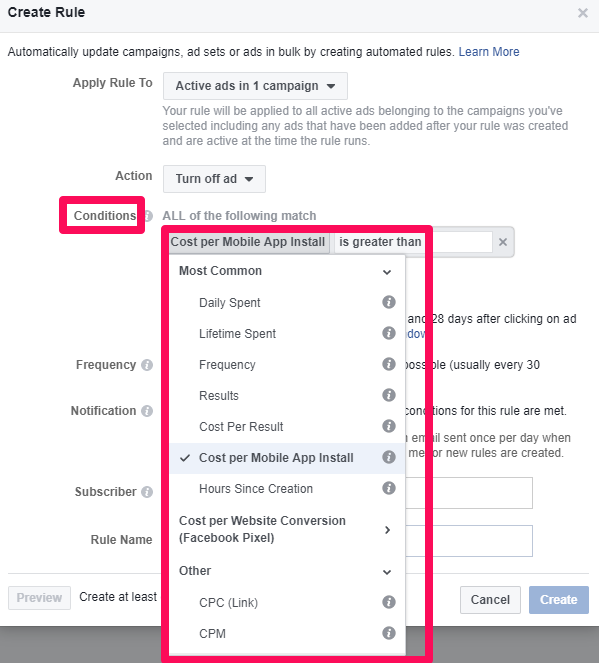
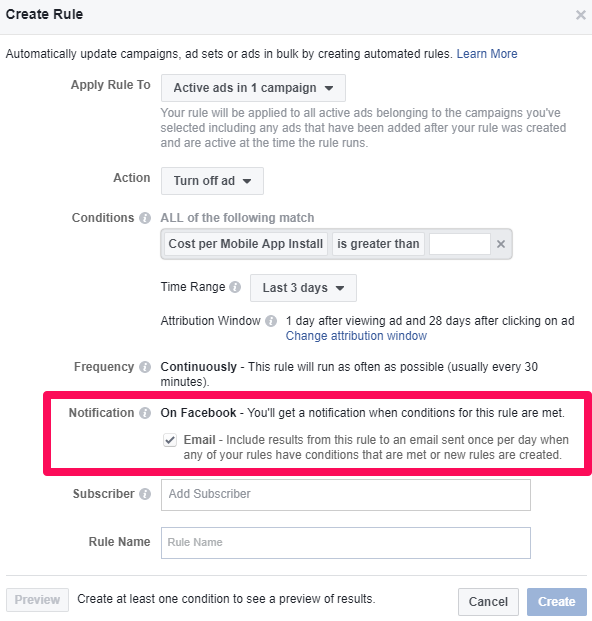
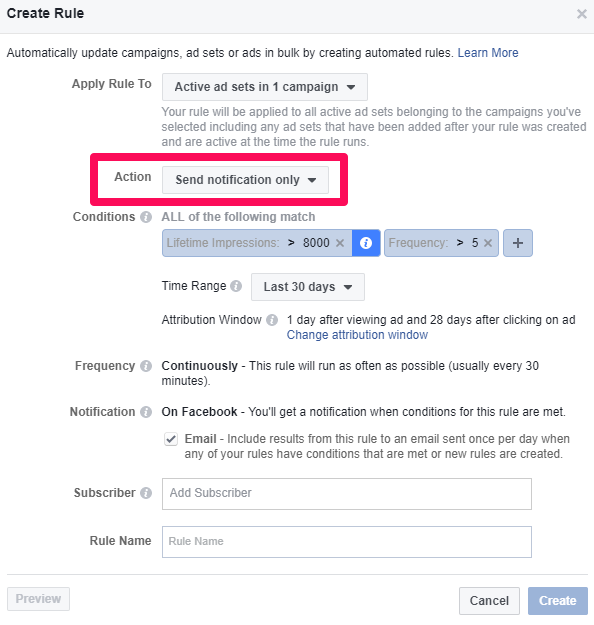
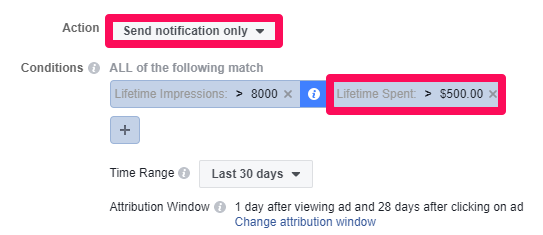
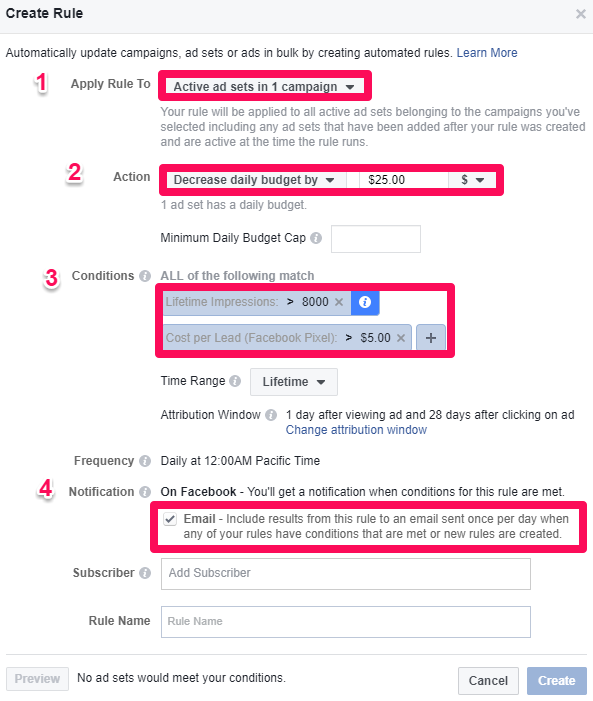
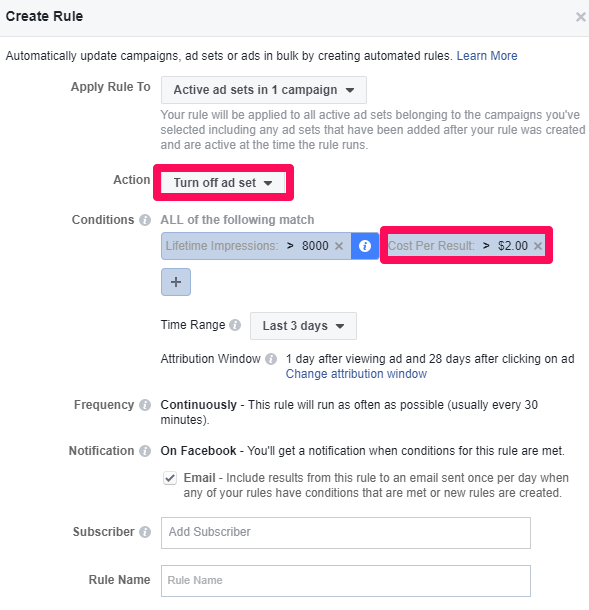
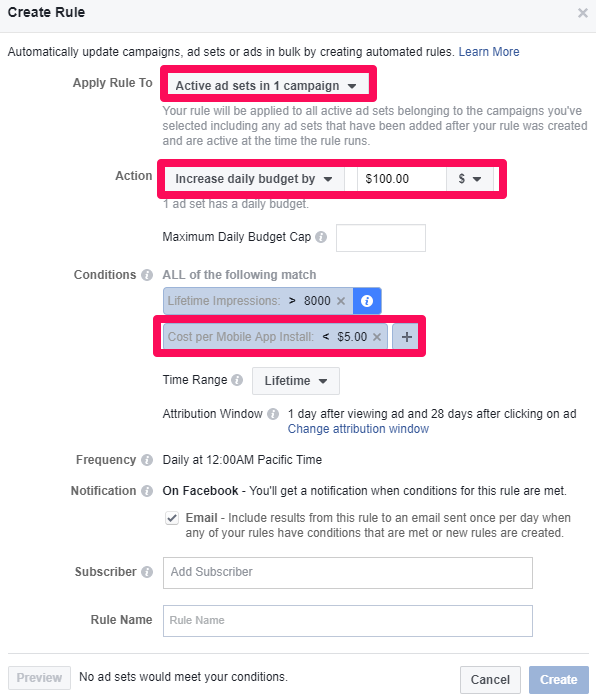

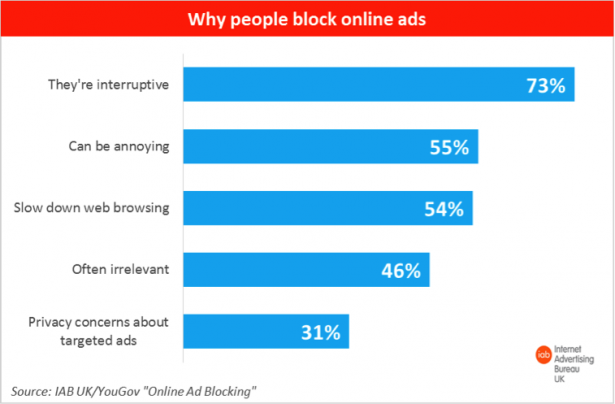

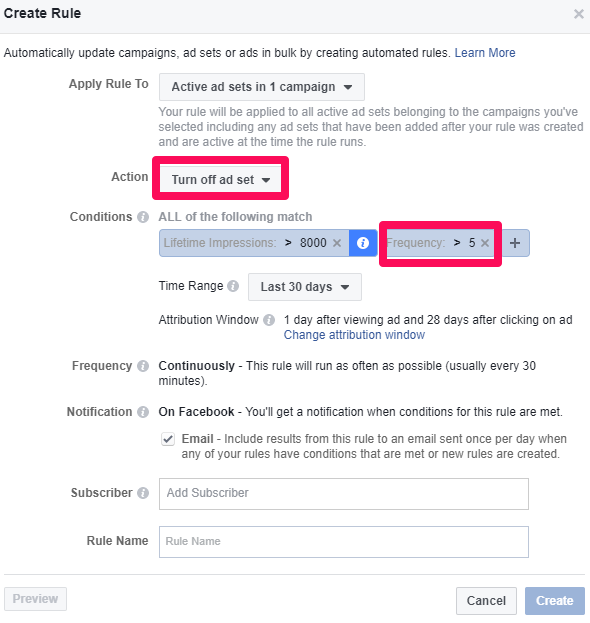
Comments (8)